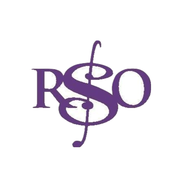
Courtenay Caublé reviews Ridgefield Symphony Orchestra concert on Saturday, May 13
Last Saturday evening’s final Ridgefield Symphony concert for this season provided a telling illustration of the importance of live musical performances. When we attend a play featuring a fine actor who has, in effect, gone beyond just memorizing the playwright’s words to assimilate his character’s thoughts and emotions, it is the actor rather than the playwright who communicates, both aurally and visually, the “essence” of the playwright’s words to us. Just reading the play or listening to a recording of it comes up short.
The same communication phenomenon applies to a musical performance. The distinguished conductor Michael Lankester was on the podium Saturday evening and cellist Adrian Daurov was his soloist in a program that included Mikhail Glinka’s Overture to Ruslan and Ludmila, Dmitri Shostakovich’s first Cello Concerto, and Beethoven’s Symphony No. 3 (the Eroica). Like a fine actor, Maestro Lankester, conducting without scores, had obviously memorized all of the music’s notes and rhythms, but it was his assimilation of the memorized scores’ varying moods and emotional subtleties that brought the music to life through his expressive visual movements, first for the orchestra and therefore ultimately, both visually and aurally, for the audience as well.
Maestro Lankester’s handling of Glinka’s Ruslan and Ludmila overture set a high performance standard for the evening with wonderfully managed contrasts between its lively, march-like opening theme and its flowingly lyrical second one and with varying conducting approaches that both directed and controlled phrasing and nuances for his orchestra and visually underscored them for his audience.
Apart from what may or may not have inspired Shostakovich’s concerto, his score is musically impressive, with an energetic, almost frenetic first movement, a lyrically moving second one, a solo cadenza so long that Shostakovich counted it as an additional movement, and a summarizing finale that ends in an impressive virtuosic display. Daurov managed all of it to expressive perfection, with fine collaboration from Maestro Lankester and the orchestra. High points were Daurov’s lyrically moving playing in the slow second movement, his expressive treatment of the myriad moods of the prolonged cadenza, and both his expressive playing and his virtuosity in the finale. Additional kudos must also go to Bert Hill for his excellent solo horn spots throughout the concerto.
Beethoven’s third symphony, the “Eroica”, which is reportedly to have been the composer’s favorite, is certainly one of mine. Maestro Lankester did it more than justice, with especially fine readings of the high-tensioned first movement, the slow “funeral march”, and the impressive theme and variations Finale.
It was the sort of season closer that leaves one in eager anticipation of things yet to come.
Learn more about the Ridgefield Symphony here.